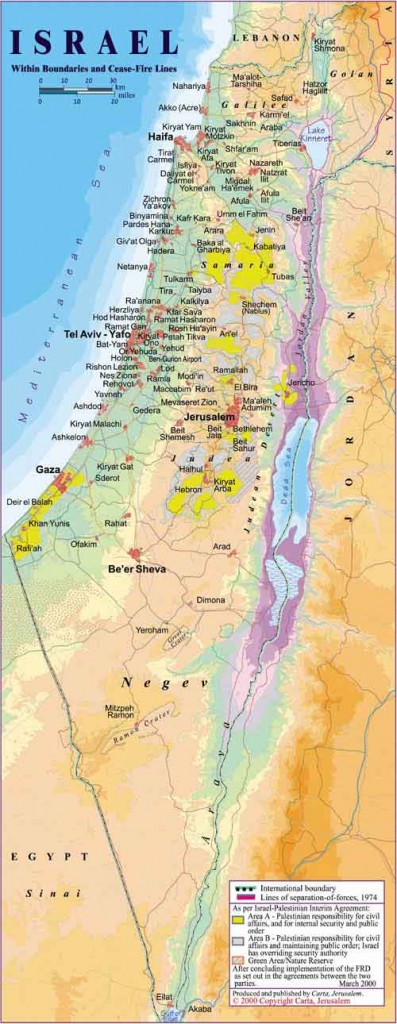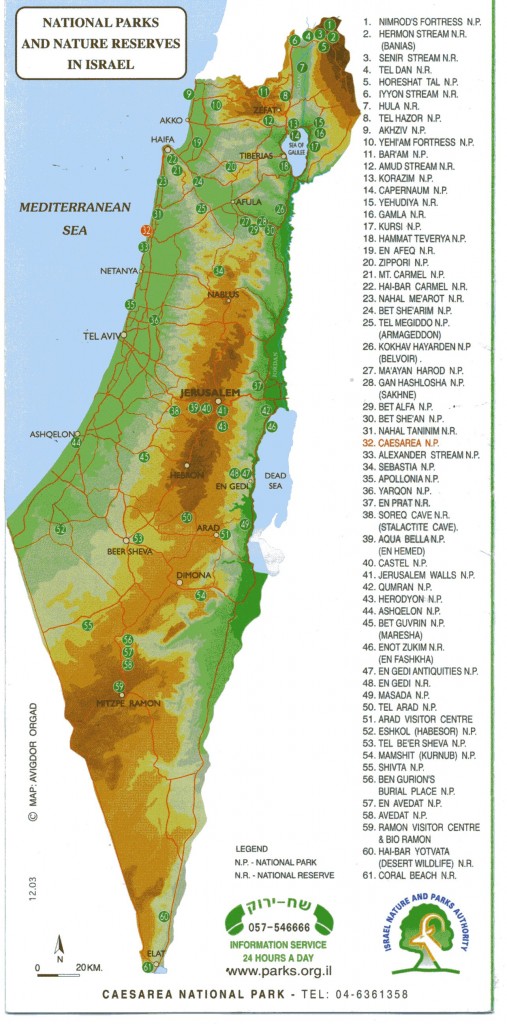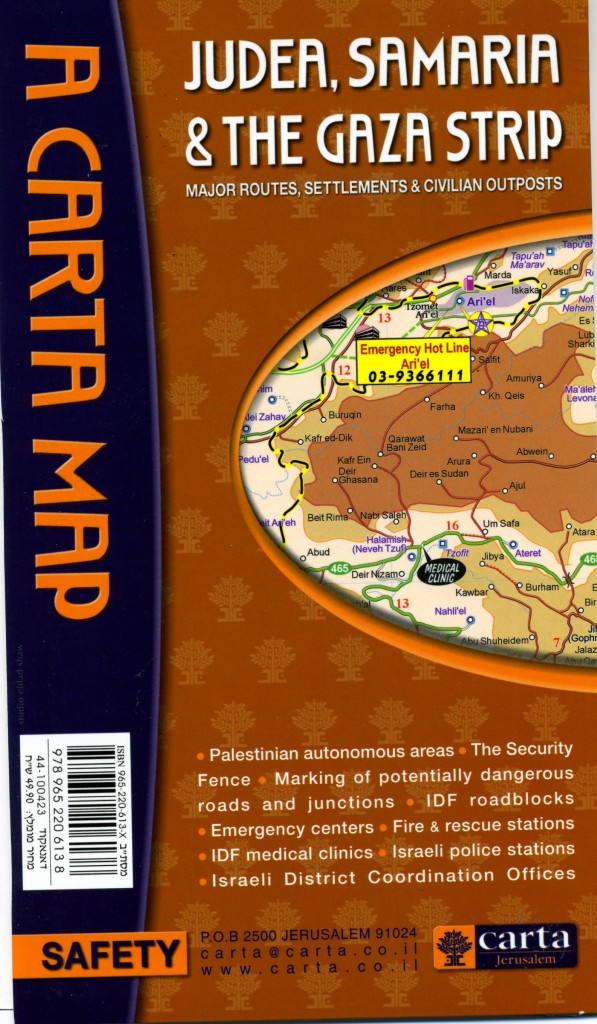The Green Line
Page last updated 23 Oct 2015
Introduction
In December 1967 the Israeli military government started using the term “Judea and Samaria region” as a synonym for the West Bank region (excluding what had been annexed as East Jerusalem) but it was not until 1977 and the Begin government that this description came into common use. Later on, the terms “occupied territory” or “West Bank” were to be forbidden in news reports. The reference to the ancient Jewish Kingdoms of Judea and Samaria was clearly intended to legitimise an Israeli claim to these territories (a claim accepted by no other state or international body).
For West Bank Palestinians (and many East Jerusalemites) the Green Line represents the border beyond which they cannot go freely – if they can go at all. In its advisory opinion on 9 July 2004, the International Court of Justice upheld the significance of the Green Line, confirming all territory beyond it over which Israel has jurisdiction, as occupied.
“Israel Green Lines” from Wikipedia user, Ynhockey (licensed under Creative Commons)
Articles and analyses
1. The Green line is a Red Line: the 1967 border and the two-state solution
PLO, Negotiations Affairs Department, nd.
A useful and wide-ranging question-and-answer presentation of issues surrounding the Green Line, resolution 242, East Jerusalem etc. “The June 4, 1967 borders represent the internationally recognized boundary between Israel and the occupied Palestinian territory. It also represents the historic Palestinian compromise of 1988 when the PLO limited its claim to 22 percent of historic Palestine.”
__________
2. International Court of Justice finds Israeli barrier in Palestinian territory is illegal
UN News Centre, 9 Jul 2004
On 9 July 2004, by a majority of 14 to 1, the International Court of Justice found that the so-called Separation Wall’s construction breaches international law. It violates principles outlined in the UN Charter and long-standing global conventions that prohibit the threat or use of force and the acquisition of territory that way, as well as principles upholding the right of peoples to self-determination. In the course of its findings the Court upheld the importance of the Green Line: “The Court concludes that all these territories (including East Jerusalem) remain occupied territories and that Israel has continued to have the status of occupying Power.” See the Summary of the Advisory Opinion here.
__________
3. Borderline Views: Putting the Green Line on the Map
David Newman, Jerusalem Post, 24 Feb 2014
A good overview of the history of the Green Line and the realities of life it represents.
__________
4. Elusive Line Defines Lives in Israel and the West Bank
Isabel Kerchner, New York Times, 6 Sep 2011
Despite attempts to blur it physically, and even deny its existence on maps, Israel has carefully preserved the Green Line in legal and administrative terms, and it defines lives on both sides.
__________
5. British Jewish establishment resists the Green Line
Marcus Dysch, Jewish Chronicle, 20 Feb 2014
Recognising the Green Line demarcating Palestinian occupied territory is the very least sign of recognition that Palestinians actually live in the territory bordered by the sea, Egypt, Jordan, Lebanon and Syria. This line is not included on Israeli maps. Nor does its absence seems to cause any concern to British establishment Jewish groups.
__________
6. Keep the Green Line – for the sake of a better Israel
Avraham Burg, The Independent, 7 Jun 2012
Former Knesset Speaker and Chairman of the World Zionist Organization Avraham Burg applauds the boycott of settlement goods; it marks the importance of the Green Line. “It should long have been clear to every Israeli that anything located inside the Green Line is the democratic, legal, normative Israel, and anything beyond the line is something else: undemocratic, illegal, not normative. Not ours.”
__________
7. Does the Green Line Exist?
Tamir Sorek, Stanford University Press blog, 29 July 2014
“The Green Line has different meanings for different groups and individuals. For contemporary Israeli policymakers, it exists only as an element in the matrix of control of Palestinian movement. For the shrinking Israeli Zionist left, it represents the hope for preserving a state with a Jewish majority living in peace. For the ideological settlers in the West Bank, it is an object they try to erase. For the majority of Jewish Israelis, though, it is either a vague silhouette or does not exist at all. For Palestinians in the West Bank and the Gaza Strip, it is a very tangible reality because only a few of them can cross it, after much effort.”
__________
8. But where is the green line? A few maps circulating in Israel…
a) Map of Israel
Carta map showing all the major cities of Israel. (Downloaded 20 Oct 2015)
b) Map obtained on a visit to Caesarea in 2006
c) Carta’s motoring map of the Occupied Territories (before the Gaza withdrawal)
Contents of this section
a) Maps of the occupation
b) Occupation and the Fourth Geneva Convention
Israel’s human rights violations – an introduction
Settlement building and land issues
Restrictions on movement
House demolitions, forced displacement, denial of residency rights
Justice
The Wall
The Green Line
Water
Health
Education
The economics of the occupation



